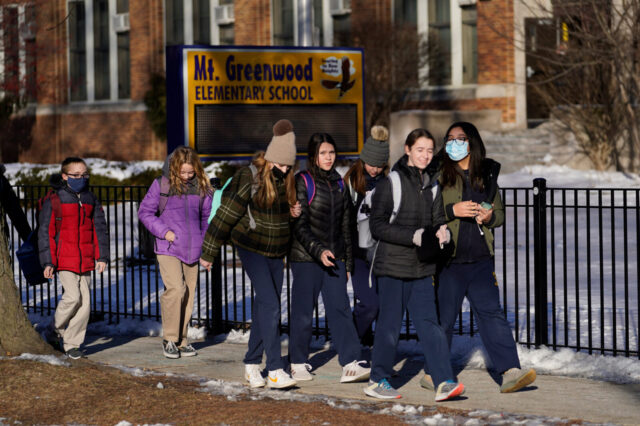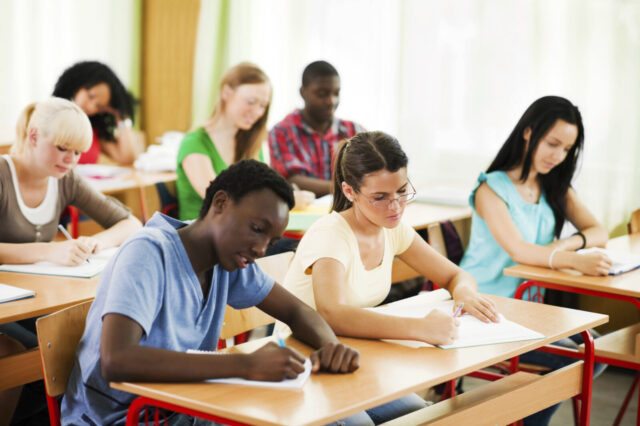
Chicago is a city that boasts an impressive and diverse array of schools, ranging from public to private institutions. However, despite this variety, there are common problems that students face in their educational journeys. From inadequate resources to high levels of violence and bullying, these issues can have a lasting impact on the academic success and well-being of students.
Smoking and Vaping

The recent surge in vaping among teens has transformed from an occasional pastime into a serious public health issue. It’s a stealthy habit, often undetectable under the guise of fruity aromas, leaving educators wrestling with the challenge of keeping e-cigarettes out of schools. Vape detection technology, a relative newcomer to the technological scene, is now being employed as an integral part of the solution. Installed in areas like bathrooms and locker rooms, the vape detector is designed to recognize vapor from e-cigarettes, immediately alerting administrators of the activity.
More significant is the necessity for education. It is here that schools have the potential to make a lasting difference. Instituting comprehensive anti-smoking and anti-vaping curriculums can equip students with the knowledge necessary to make informed decisions about their health. This, in combination with vape detection technology, can create a robust system that not only deters in-school vaping but also discourages these harmful habits outside the environment.
Bullying and Harassment: Promoting Safe and Inclusive Environments
Schools today face the daunting challenge of ensuring a safe and supportive environment for all students. With bullying and harassment issues on the rise, educational institutions are implementing strategies to foster inclusivity and respect. Technological solutions like anonymous reporting apps and online counseling platforms are transforming the way schools handle bullying. These tools empower victims and bystanders alike to stand up against harmful behavior without fear of backlash.
In addition to technological tools, they are implementing programs that promote empathy, respect, and inclusivity. Social and emotional learning (SEL) initiatives are integrated into the curriculum to equip students with the skills they need to interact positively with others. These programs go beyond mere prevention, shaping a more compassionate student body and ensuring lasting change. When combined with an appropriately responsive disciplinary approach, these efforts can effectively deter bullying and harassment.
High Dropout Rates: Implementing Strategies for Student Engagement and Retention

With dropout rates climbing in many districts, schools are grappling with finding effective strategies for student engagement and retention. The first step is identifying at-risk students through early warning systems. Advanced data analytics is used to monitor student attendance, behavior, and course performance, which are known indicators of dropout risk. When a student exhibits signs of disengagement, schools can intervene early to provide additional support.
In response to this issue, schools are exploring innovative pedagogical strategies to increase student engagement. A shift towards personalized learning, leveraging technology to tailor instruction to individual student’s needs and preferences, is proving beneficial. Digital learning platforms that engage students with interactive content, collaborative activities, and real-world problem-solving exercises are also part of this approach. This innovation helps students see the relevance of their education, reducing their likelihood of dropping out.
Achievement Gap: Addressing Disparities in Academic Performance
Educational disparities, or the achievement gap, have long been a pressing issue in schools. Socioeconomic status, race, and language proficiency often correlate with these disparities, creating an uneven playing field for students. Advanced data analytics is providing educational institutions with more nuanced insights into this issue. By examining factors like attendance, course grades, and standardized test scores, schools can identify patterns and intervene more effectively.
Curricular adaptations are another method schools are utilizing to close the achievement gap. Personalized learning strategies and differentiated instruction ensure that each student’s unique needs are catered to, promoting academic success. Furthermore, they are investing in professional development for teachers, equipping them with the skills to recognize and cater to diverse learning needs and styles.
Limited Resources: Maximizing Learning Opportunities with Budget Constraints
In a world where budget cuts are commonplace, schools are often left trying to do more with less. Innovative technology is becoming a crucial tool for institutions looking to maximize learning opportunities within these constraints. Online learning platforms, digital textbooks, and open educational resources (OER) provide affordable alternatives to traditional teaching materials. They not only reduce costs but also allow for interactive and personalized learning experiences.
To address financial limitations, they are adopting creative approaches to fundraising. Crowdfunding initiatives and partnerships with local businesses or non-profits are common strategies. Additionally, grant programs for education, offered by both governmental and private entities, are another promising avenue for additional funding.
Violence and Safety Concerns: Enhancing Security Measures and Conflict Resolution Programs
Ensuring students’ safety is paramount for any educational institution. In the wake of increasing violence and safety concerns, schools are turning to advanced technology for assistance. High-tech surveillance systems, secure entry points, and emergency response protocols are part of this new security framework. These measures offer a robust response to potential threats, providing students and staff with a sense of security.
However, preventing violence isn’t merely about physical security. It’s equally about fostering a peaceful and respectful school culture. They are implementing conflict resolution programs and restorative justice practices, which promote the peaceful resolution of conflicts and accountability for harmful actions. Such initiatives can help cultivate a non-violent culture within the school community.
It’s critical, though, to balance safety measures with the preservation of a nurturing, welcoming school environment. Overly intrusive security measures can create a climate of fear and suspicion. Therefore, it’s essential to engage the school community in safety initiatives, ensuring they are seen as part of a shared commitment to a safe and supportive learning environment.
Lack of Mental Health Support: Increasing Access to Counseling and Emotional Well-being Services

In a time when mental health issues among students are on the rise, schools play a vital role in providing support. More schools are now recognizing this need and expanding access to mental health resources. They are integrating social and emotional learning (SEL) into their curriculums, teaching students skills like emotional intelligence, empathy, and resilience.
Counseling services are also being prioritized. Many schools are increasing the number of on-staff psychologists and counselors. They are also leveraging technology, offering online counseling services to reach students who may not feel comfortable seeking help in person.
However, providing services is only half the battle. Schools must also create an environment that destigmatizes mental health issues and encourages students to seek help. By fostering a culture of openness and acceptance, schools can ensure that no student suffers in silence.
Conclusion
It is encouraging to see that schools in Chicago are taking measures to ensure their students receive the best education possible, as well as addressing any challenges they may face along the way. With continued efforts from both school administrators and parents, it is hopeful that these difficulties can be managed successfully and that all students will thrive academically in their respective schools.










